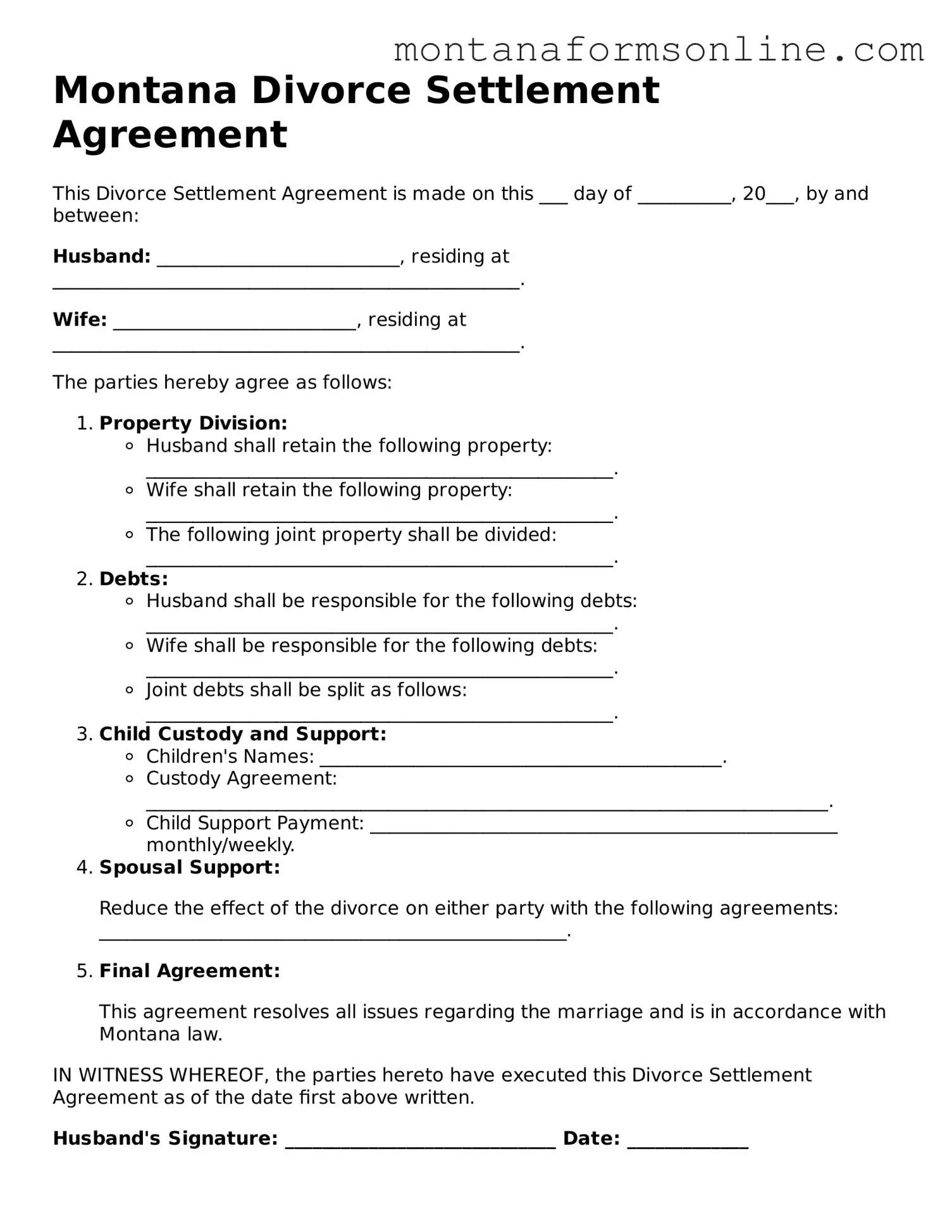What is a Montana Divorce Settlement Agreement?
A Montana Divorce Settlement Agreement is a legal document that outlines the terms and conditions agreed upon by both spouses during a divorce. This agreement typically covers issues such as property division, child custody, child support, and spousal support. It serves to finalize the terms of the divorce and can be submitted to the court for approval.
Why is a Divorce Settlement Agreement important?
This agreement is crucial because it helps prevent future disputes between the parties. By clearly defining the rights and responsibilities of each spouse, the agreement provides a roadmap for post-divorce life. It also ensures that both parties understand their obligations, which can reduce stress and conflict.
Who should prepare the Divorce Settlement Agreement?
Both spouses can prepare the Divorce Settlement Agreement, but it is advisable to consult with a legal professional. A lawyer can ensure that the agreement complies with Montana laws and adequately protects each party's interests. If both parties agree on the terms, they can work together to draft the document.
What should be included in the Divorce Settlement Agreement?
Key elements to include are:
-
Division of marital property and debts
-
Child custody arrangements
-
Child support obligations
-
Spousal support (alimony) terms
-
Health insurance coverage for children
-
Tax considerations related to children and support
How is the Divorce Settlement Agreement submitted to the court?
Once both parties have signed the agreement, it must be submitted to the appropriate Montana court. This typically involves filing the agreement along with other required documents, such as the divorce petition. The court will review the agreement to ensure it is fair and in compliance with state laws before granting the divorce.
Can the Divorce Settlement Agreement be modified after it is signed?
Yes, modifications can be made if both parties agree to the changes. It is important to document any modifications in writing and have both parties sign the new agreement. However, significant changes may require court approval, especially regarding child custody and support.
What happens if one party does not comply with the agreement?
If one party fails to comply with the terms of the Divorce Settlement Agreement, the other party can seek enforcement through the court. The court may take various actions, including ordering compliance, modifying the agreement, or imposing penalties on the non-compliant party.
Is legal representation necessary for the Divorce Settlement Agreement?
While legal representation is not required, it is highly recommended. A lawyer can provide valuable guidance, help negotiate terms, and ensure that the agreement is legally sound. This can save time and reduce potential issues in the future.
How long does it take to finalize a Divorce Settlement Agreement?
The time it takes to finalize a Divorce Settlement Agreement varies. If both parties agree on the terms, the process can be relatively quick. However, if there are disputes or negotiations are necessary, it may take longer. Typically, the entire divorce process, including the settlement, can take several months.
The Montana Divorce Settlement Agreement form can be obtained from the Montana court's website or local courthouse. Many legal aid organizations also provide resources and templates that can assist in preparing the agreement.
